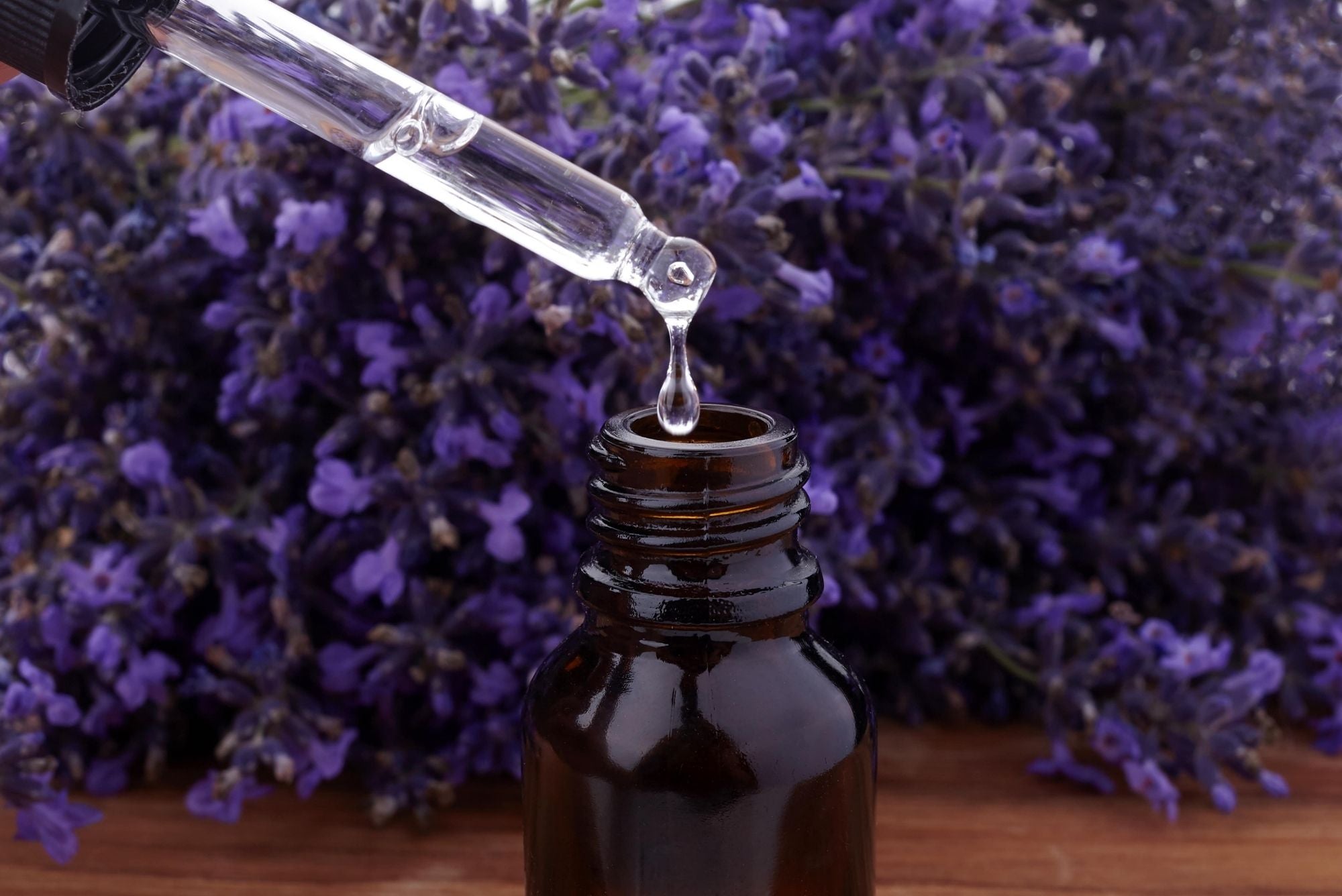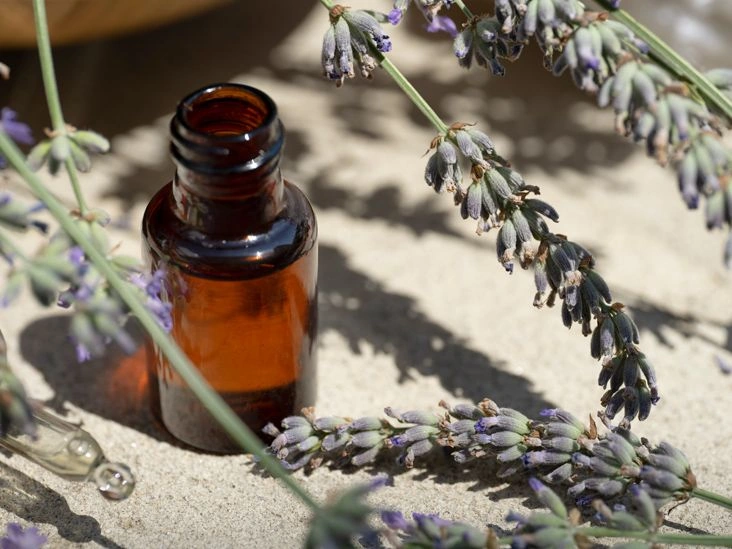Lavender oil provides a range of promising benefits for the skin, such as lowering inflammation and enhancing wound recovery. However, you should not apply it directly to your skin without first diluting it.
Lavender oil is an essential oil obtained from the lavender plant. It can be used topically and inhaled through aromatherapy.

Lavender oil can support the skin in several ways. It may help diminish acne, even out skin tone, and reduce the appearance of wrinkles. It’s also used for other purposes, including improving hair condition and aiding digestion.
Lavender oil for acne
Lavender oil has antibacterial effects that can help prevent and resolve acne outbreaks. When applied to the skin, it can unclog pores and soothe inflammation.
To apply lavender oil for acne, dilute it in coconut oil or another carrier oil and use it after cleansing your face.
You can also make a facial toner by combining 2 drops of lavender oil with 1 teaspoon of witch hazel. Soak a cotton pad in the mixture and gently sweep it across your face.
For a persistent spot, argan oil may help reduce swelling. Mix 1 drop of lavender oil with 1 drop of argan oil and apply directly to the pimple twice daily.
Calms eczema and dry skin
Eczema can occur on any part of the body, causing dry, itchy, scaly patches. It may be mild or chronic and appear in different areas. Because lavender has antifungal and anti-inflammatory properties, it can help manage eczema.
As eczema is an allergic inflammatory skin condition, perform a patch test before using lavender for the first time, since it may aggravate eczema in some people.
Lavender oil is also used for psoriasis. It can help clean the skin and reduce redness and irritation.
For eczema relief, mix 2 drops of lavender oil with an equal amount of tea tree oil and 2 teaspoons of coconut oil. This blend can be applied daily.
Lavender oil for uneven skin
Lavender oil may help even out skin tone because of its anti-inflammatory action. It can diminish discoloration, including dark spots, and reduce blotchiness and redness. If you have hyperpigmentation, lavender oil might assist in improving the appearance.
Lavender oil for facial wrinkles
Free radicals contribute to fine lines and wrinkles. Lavender oil contains antioxidants that help protect against these damaging molecules. To use lavender oil for wrinkles, mix a few drops of the essential oil with coconut oil and apply the blend as a moisturizer once or twice daily.
Anti-inflammatory effects
Lavender oil can be useful for treating painful inflammation. Its analgesic and mild numbing properties help soothe inflamed areas, while beta-caryophyllene in the oil acts as a natural anti-inflammatory.
To address inflammation from a burn, blend 1 to 3 drops of lavender oil with 1 to 2 teaspoons of moringa or coconut oil. Apply the mixture up to three times a day.
For sunburn relief, a lavender spray can be soothing. In a spray bottle, combine a quarter cup of aloe vera juice, 2 tablespoons of distilled water, 10 to 12 drops of lavender oil, and jojoba oil. Shake and mist onto the sunburn. Use the spray two to three times daily until the sunburn improves.
Wound-healing properties
For burns, cuts, scrapes, or other wounds, lavender oil may promote faster healing of the skin. In a study, researchers observed that lavender oil supports the regeneration of skin tissue.
To apply lavender oil to minor wounds, mix 3 or 4 drops of lavender oil with a few drops of coconut or tamanu oil. Dab the blend onto the wound using a cotton ball.
Watch for signs of wound infection such as increased redness, pain, swelling, pus, or fever. Consult a healthcare provider before using lavender oil if any of these symptoms are present.
Insect repellent
Lavender oil serves a dual purpose for insect issues: it can repel insects and also relieve itching after a bite. Many commercial mosquito repellents include lavender oil.
You can use lavender in candles or sprays to deter mosquitoes and other pests. Add about 7 drops to a candle for outdoor use.
For a spray, mix 8 ounces of water with 4 drops of lavender oil in a spray bottle and shake well. As a natural option, you can mist it on your skin and clothing before going outdoors.
Insect bites often cause redness, itching, and discomfort and can become infected. Lavender oil can ease bites by fighting bacteria, reducing inflammation, and providing natural analgesia.
To treat a bite, mix 1 or 2 drops of lavender oil with a carrier oil like coconut oil and apply to the bite twice daily or more. If the sting is sharp, adding a drop of peppermint oil can help numb the area.
Lavender oil is also effective for managing poison ivy reactions.
How to use lavender oil on skin
The method you choose depends on the issue you’re addressing. For topical use, dilute lavender oil with a carrier oil to make a lotion or ointment.
When applying to damaged skin, it’s often cleaner to use a cotton ball rather than your fingers. For moisturizing wrinkles and dry areas, you can rub the diluted oil in with your hands.
Lavender oil is also used in steam inhalation for aromatherapy. Although generally considered safe, some people may experience irritation. Discontinue use if you encounter adverse reactions.
If you are pregnant, avoid essential oils during the first trimester because they can expose the fetus to potentially harmful compounds. After the first trimester, use lavender only for aromatherapy and refrain from ingesting or applying essential oils topically during pregnancy.
Takeaway
Lavender oil offers multiple benefits for skin care. It naturally reduces inflammation, relieves pain, and helps cleanse the skin’s surface. It can be applied to the face, hands, and legs.
If you notice any adverse effects such as a rash after using lavender oil, stop using it and consult a healthcare professional.


















Leave a Reply
You must be logged in to post a comment.